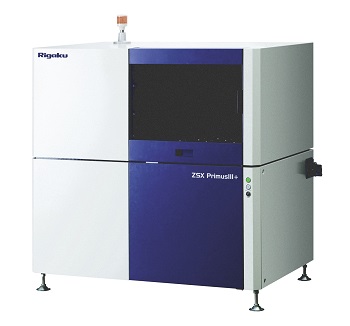Rigaku Corporation has published a new application report demonstrating the analysis of geological samples using the semi-quantitative method and employing wavelength dispersive X-ray fluorescence (WDXRF) spectrometry.
Rigaku Application Note #XRF 1020 shows the analysis of geological samples (including details of sample preparation method, calibration and repeatability) whereby WDXRF is used to quickly determine the chemical compositions of unknown samples.

The requirement for quick determination of elements in geological samples, which are typically composed of a wide range of elements, has been increasing in numerous industries and fields of study, including energy exploration, mining operations, environmental studies and human health research.
Proper analysis methods for such unknown samples require flexibility in addition to quickness. Semi-quantitative analysis in modern XRF instruments is a unique method that is performed without using any reference materials for the unknown sample analysis.
The pressed powder method is the most common technique for powder samples in XRF spectrometry. For the described analysis, a granitic rock was used as a demonstration sample. The well-dried samples were pressed under a pressure of 100 kN using a sample support ring made of aluminum.
The Rigaku ZSX Primus III+ WDXRF spectrometer was used for measurement. The ZSX Primus III+ is a floor-standing spectrometer designed to offer advantages in high spectral resolution and high sensitivity from light to heavy elements. Sequential scan analysis from fluorine to uranium was performed, followed by semi-quantitative analysis.
For this analysis, a fixed angle measurement was applied for each trace element. The fixed angle measurement is one of the unique functions of the Rigaku SQX program, a semi-quantitative analysis program used to obtain concentrations by theoretical calculation using the fundamental parameter (FP) method and an internal sensitivity library. Performing measurements with this function can significantly reduce statistical counting errors and improve precision for trace element analysis.
In the published report, SQX calculations with the Matching Library were applied to light elements from sodium to calcium. Significant errors are often produced in analyzed results of light elements in powder samples due to grain size and mineralogical effects. The results from the SQX analysis coincide with the reference values and show improvement for light elements. In general, geological samples are dominantly composed of light elements due to silicate minerals, so the “Matching Library” function is effective in correcting for these conditions and obtaining accurate results.
The results shown in the report were obtained on the ZSX Primus III+ spectrometer with a 3 kW X-ray tube. With a 4 kW X- ray tube, the ZSX Primus III+ can produce exceptional results in the determination of trace elements.
The report confirms that semi-quantitative analysis by the pressed powder method by WDXRF is powerful technique to quickly obtain chemical compositions of unknown samples. The standardless analysis program “SQX” is shown to be an effective tool for quickly identifying and quantifying elements, providing inexperienced users with easy-to-use operation.
A copy of this report may be requested at: